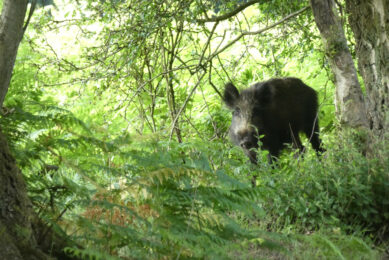What the textbooks don’t tell you about… Motivating pig farm workers (2)
Last month I discussed the sociological aspects of motivation. It is time now to make a few suggestions; many of them you won’t find in a pig textbook…
- Always express performance results in graphical form. Very few of us piggy people like keeping records and even fewer are anything like numerate – which includes myself, by the way! Remember the old Chinese proverb about ‘seeing and understanding’, or even the one of our own… ‘every picture tells a story’ I’ve done several modest tests with both farmers and college students where they were asked the same question with the answer expressed in columns of figures and exactly the same data in graphical form. Correct answers were between 18% to 40% higher in the pictorial presentation.
- When performance figures are linked to agreed targets in graphical form it can be amazing how this gets workers interested. I’ve known section heads get quite hooked on record-keeping – even staying behind after hours when this technique is available to them. Remember that a computer can churn out data in coloured pictures just as fast and easily as it can print those boring old columns of figures.
- Next, when pictorial weekly achievements against target are pinned up every week on the rest-room wall, after a time curiosity gets the better of even the lowliest stockperson and they get involved too.
- Provide a decent rest-room. Show you care about relaxation in reasonable comfort and cleanliness. Delegate a rota to keep it tidy – pig workers are as messy as their pigs!
- The same with the shower room.
- Provide overalls with the farm logo on the back. We saw last month that ‘a sense of belonging’ was a motivating factor.
- Have a planned training schedule. A good pig vet who knows the farm and its staff as well as its pigs is a marvellous trainer, either in a group session or on a one-to-one basis as he tours the farm. Be prepared to cost this training into the farm labour costs.
- Have a recognised promotional ladder. Take advice on both this and the training aspect. A cleverly-designed ‘carrot and stick’ format works well, tied in to a monetary reward. For example, targeted performance is based on a ‘cliff and plateau’ concept – if these are spaced intelligently in a non-frightening bit-by-bit manner, then as performance nears a ‘cliff’, there is an incentive for the employee or team to climb it and reap the financial reward. Then having climbed it, the threat of falling back down again to the previous wage level encourages the workers by their own efforts to distance themselves safely away from it – whereupon the next cliff looks tantalisingly close. And so on. It is a sort of both positive and negative bonus – clever! Done well it sure works.
- Consider insurance for paid sick or injury leave.
- Have job descriptions and even an ‘employee handbook’ to cover aspects of farm routine, health and safety, emergency drill and general instruction and guidance outside the more personal aspects of a job description list. The handbook should be written in a friendly ‘look at it this way’ style and not in a bureaucratic manner. The Japanese do little cartoon characters – very good!
- Finally – use your imagination. Such as giving or lending a sow to a pig technician either as a bonus reward or as a straight gift in order to keep a good worker with you. The worker secures the profit from the litter.
The difficult question of pay
How much to pay Look at your labour costs in relation to total production costs. In the developed pig industries of Western Europe, Scandinavia and Northern America, these in my experience lie between 12-14%. For Eastern Europe, the Pacific rim (excluding Australia/ New Zealand, Japan and Korea) about a quarter to one-fifth lower. If you are below these levels you could be underpaying and demotivating people with the risk of damaging the performance of the pigs in their care.
I have evidence from many years of persuading owners – yes, usually hesitantly but helped by bonuses – to move their total wage costs up to these bench-marks. The gross margin often rose by 15% within a year due to better-motivated staff. Take a look at what this extra financial outlay will mean to production costs – or for the weekly wage of your staff, for that matter – it will surprise you as it won’t be all that much.
Do not increase wages suddenly, but increase them steadily over a period and try to link it to a sensible well-planned bonus plan. Bonus schemes are now a common part of employment in the retail and industrial sectors (and overdone in the financial field, it is true!) where it is easier to measure performance than with livestock production. Agriculture is lagging behind in this ‘new’ area.
Next month: on to the most disliked subject of all – that of the dreaded job appraisal!











